Gate
Image: Disney
When Disney Parks enthusiasts talk about a "gate," they usually don't mean entrance turnstiles. Often, "gate" is a synonym for theme park. Simple enough, except when fans begin talking about "Walt Disney World's cinematic gate" (Disney's Hollywood Studios) or "Disneyland's second gate" (Califonia Adventure), essentially turning the name game into a pop quiz on association or Disney Parks history.
When will Disney World add the legendary and mythological "fifth gate?" It's anyone's guess.
Hub-and-spokes
Image: Disney
Have we mentioned yet that Disneyland was revolutionary? Just as its single entrance and its admission fee were radical, so was what followed: how that long, single, shared entry forced all guests into the center of the park. But this, too, was intentional and groundbreaking. While other amusement parks had developed as long, stretched midways or piers lined with attractions, Disneyland was built all-at-once in what designers called a "hub-and-spokes" layout.
You can see why – when viewed from above, the park is laid out like a wheel or a bicycle tire. Main Street forces all guests to the center of the wheel, with themed lands branching off via pathways laid out like spokes on a tire. From that center point, guests are "pulsed" into the lands, able to circumnavigate the park however they'd like. What's better, the hub-and-spokes layout ensures that guests are never too far from anything – even the opposite ends of the park are connected via a path through the Hub! – and that wayfinding is simple and natural: just get back to the castle!
Obviously, Disney's "castle" parks and Animal Kingdom are the best examples of the hub-and-spokes layout, with subsequent parks using figure-8 (California Adventure, DisneySea, and Epcot) and... y'know... an utter, unplanned, horrible collection of dead-ends (Disney's Hollywood Studios), but the hub-and-spokes layout is still used in urban planning and design and is recognized as one of the great innovations of Disneyland as a functional place.
In-show exit
Image: Disney
Most times when a ride E-Stops, it's only a momentary interruption before the attraction resumes operation. Even when a show can't resume in its optimal show condition, it's often easiest to simply cycle through the ride vehicles and have guests disembark at the station, with a FastPass to return later. What happens if your ride E-Stops and Cast Members determine it can't be continued? As its name suggests, an "in-show exit" is Disney's friendly wording for what the less-thoughtful would call an evacuation.
Certainly, most in-show exits aren't emergencies. But if it's determined that maintenence or a hard reset will be required before an attraction can continue or if it's unknown how long a problem might persist, Cast Members will visit each ride vehicle, manually release guests, and escort them to the nearest exit in an expectedly orderly fashion.
As you can imagine, many industry fans have their wishlist of rides they'd love to have an in-show exit while riding (who wouldn't want to walk through Disney's epic dark ride scenes, or come within feet of a frozen, malfunctioning Audio-Animatronic?). Like all things, Disney's got the in-show exit down to a science, so even if it requires stepping off of a boat or a seemingly-perilous trip down stairs, such evacuations are really quite simple with all the right hardware to make it as easy as possible for guests.
IP
Image: Disney
It's hard to be a part of Disney Parks fandom today without seeing debate and discussion around IP – intellectual property. IP is a legal area meant to protect intangible things like trademarks, patents, and copyrights. At least for now, U.S. Intellectual Property legislation protects Mickey Mouse, for example, as an image and likeness usable only by the Walt Disney Company (an incredibly controversial protection which is near expiration...).
Disney has perhaps the most extensive, recognizable, and valuable portfolio of IP on Earth. Look at Mickey and Friends alone! Then think of how Disney took public domain fairy tales (like Snow White, The Little Mermaid, The Snow Queen, Beauty and the Beast, Aladdin, and Sleeping Beauty) and created the definitive (and very, very protected) versions. Then add in recently-acquired IP (Marvel, Star Wars, Pixar, Indiana Jones) and you can see why Disney's intangible brand is said to be worth $40 billion.
Naturally, IP and its place in Disney Parks is the hot topic of today. While Walt himself stocked Disneyland with the IP that mattered to audiences of the 1950s, the concept was thrown into overdrive during Michael Eisner's cinematic tenure in the '80s and '90s and has been increased exponentially by today's Disney CEO Bob Iger. That's why fans mourn that the era of original concepts appears to be over (Disney World's last major, non-IP attraction was Expedition Everest in 2006) with any and all known future projects tied to box-office blockbusters or heavy-hitting brands.
Lifestyler
Image: Disney
Both Disney Resorts in the U.S. have a hefty population of Annual Passholders (APs) who visit often enough to make the expensive passes a worthy investment. A very distinct subset of those may be what are sometimes called lifestylers – people for whom Disney Parks are part of their (almost) every day life. Lifestylers are often locals who pop into the parks after work just to grab a quick dinner or stake out a spot for a nightly parade. When tourists see a line a hundred people long waiting to purchase a "collectible" popcorn bucket and ask, "Who would waste a day here doing that?", the answer is... lifestylers!
Especially at Disneyland (renowned for its heavy local draw and its massive percentage of APs), lifestylers tend to descend on the park in the evenings and on Sundays... just to mill around! Of course, that can draw the ire of tourists, who find that – from 5 PM on – the park's pathways become increasingly crowded with people who aren't really going anywhere. Lifestylers also tend to stake out spots for shows they've seen dozens times before, hours ahead of time... shows that tourists only have one chance to see and can't waste an afternoon holding spots to watch!
Many times, lifestylers won't even bother queuing for rides. They may snag a last-minute cancellation FastPass or catch a showing of the Modern Marvels: Carousel of Progress or the Country Bear Jamboree, but for these lucky locals, stopping by Epcot for dinner and a drink is no different from going downtown after work for the rest of us.
Nighttime spectacular
Image: Disney
Though it's become deeply embedded in industry fans' vocabulary, your average Joe probably wouldn't have a clue what you meant if you mentioned a "nighttime spectacular." Of course, that's the term applied to grand, show-stopping, final productions put on nightly at most Disney Parks. Reserved only for top tier entertainment, "simple" projection displays (like the gorgeous Tree of Life Awakenings or the Chinese Theater projection shows) rarely qualify; in fact, most fans wouldn't count awesome nighttime parades like Paint the Night or even fireworks shows in this exclusive category.
Rather, think on the scale of Disneyland's Fantasmic!, Epcot's Illuminations, or California Adventure's World of Color – each truly sensational, memorable in every way, and a perfect capstone to a day at the park. Another common giveaway that you've found a nighttime spectacular is that guests either have to get a ticket or queue up hours in advance to secure the best spot. The benefit for Disney? A nighttime spectacular keeps guests lingering in the park for dinner and shopping when they might otherwise have chosen to head back to the hotel in the early evening.
Nighttime spectaculars are the reason that Disney Parks fans are known to visit their city's Independence Day fireworks and let out a resounding, "Meh."
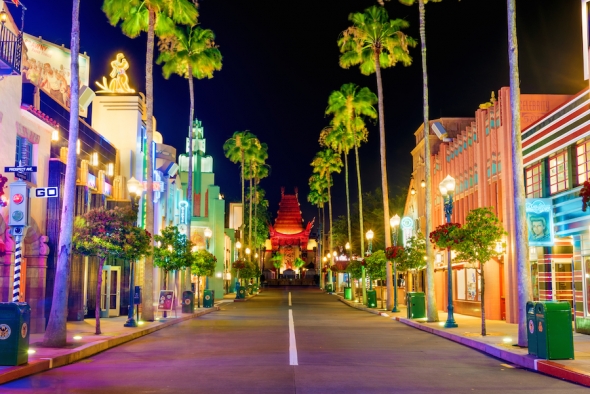
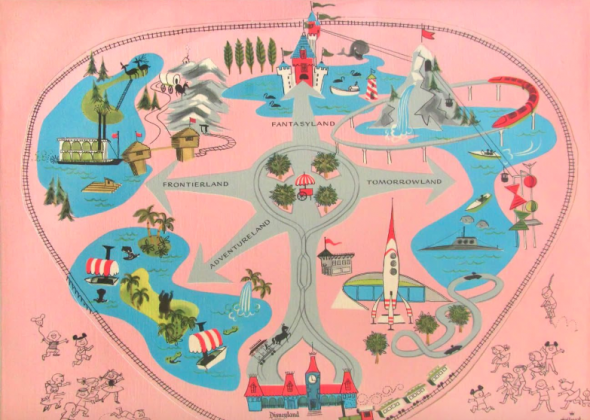
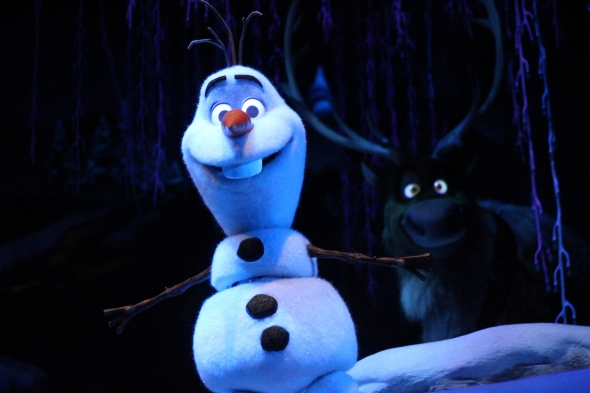
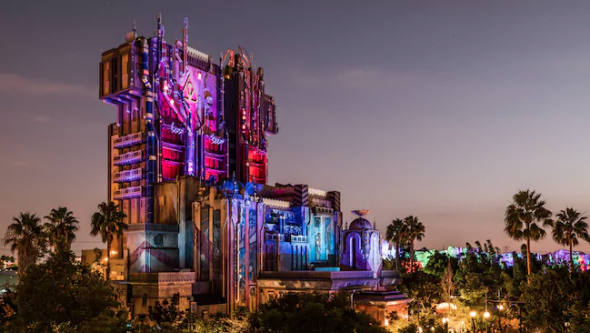
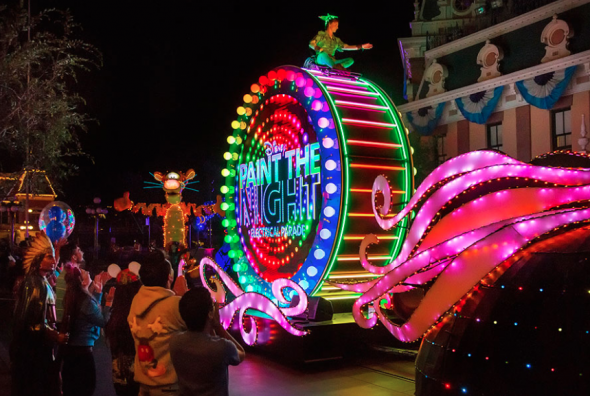
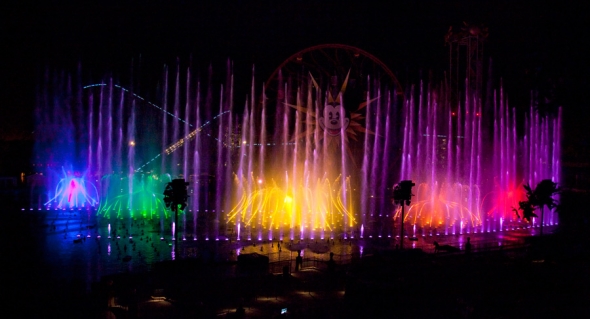

Add new comment